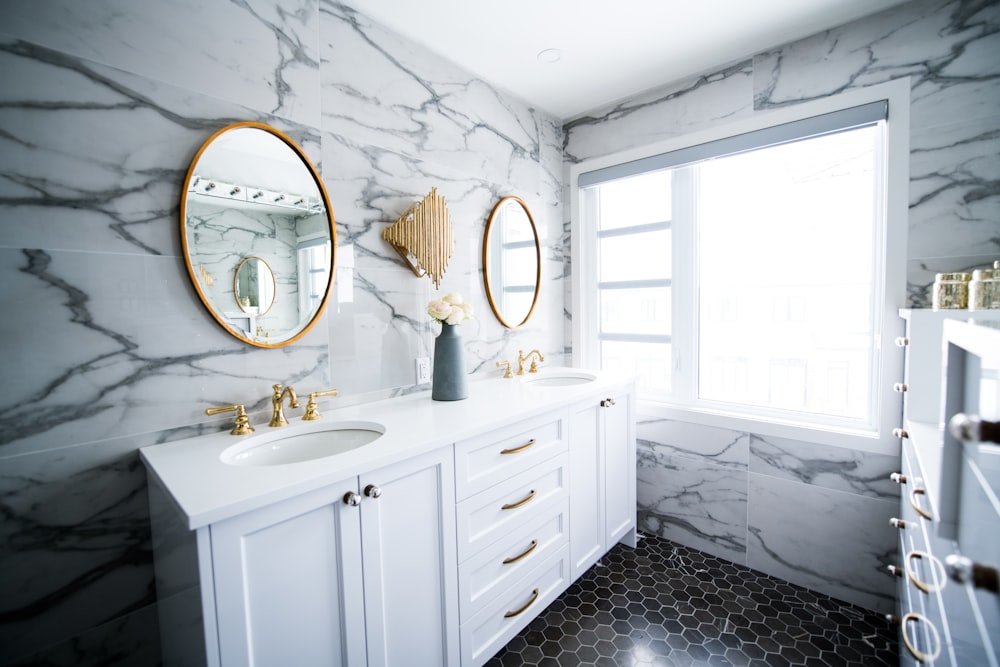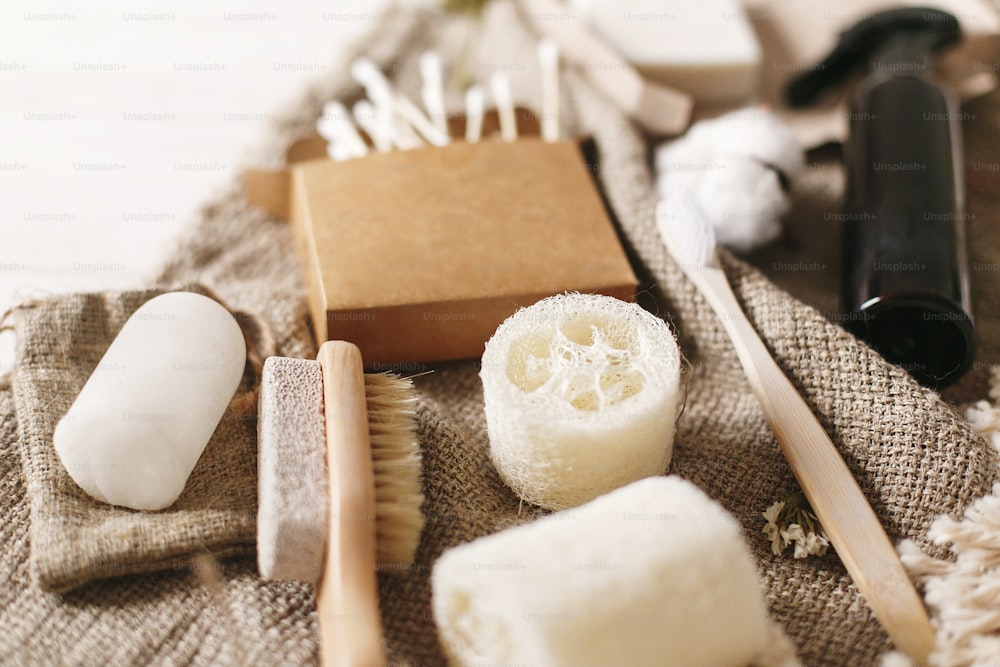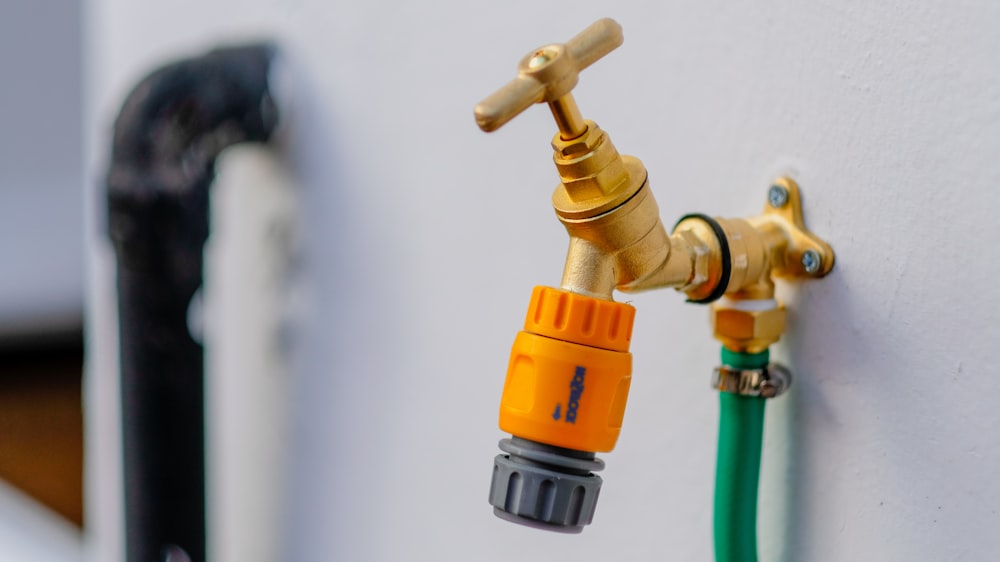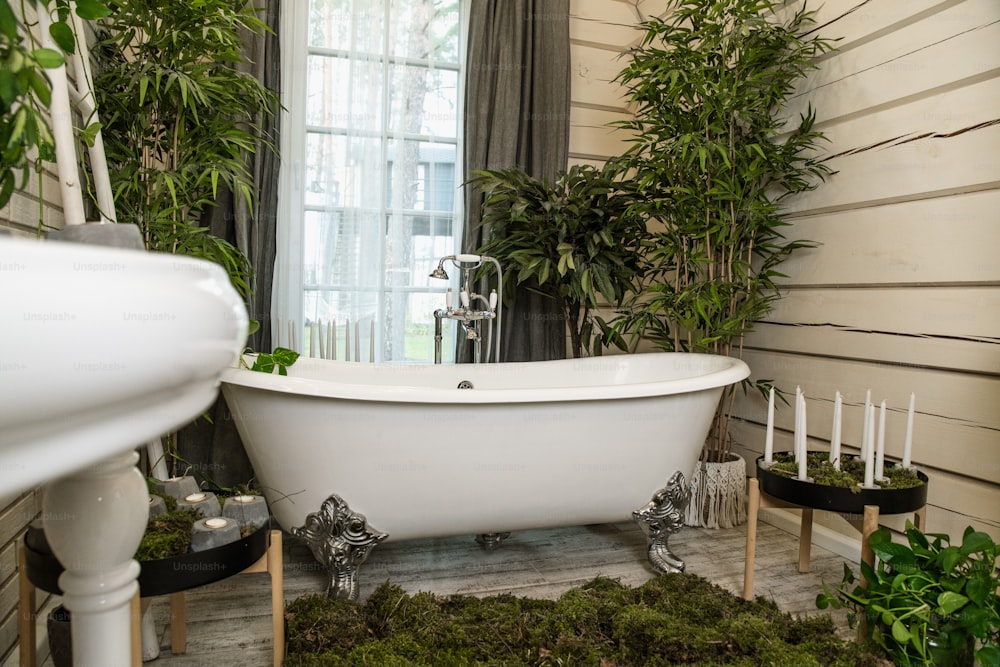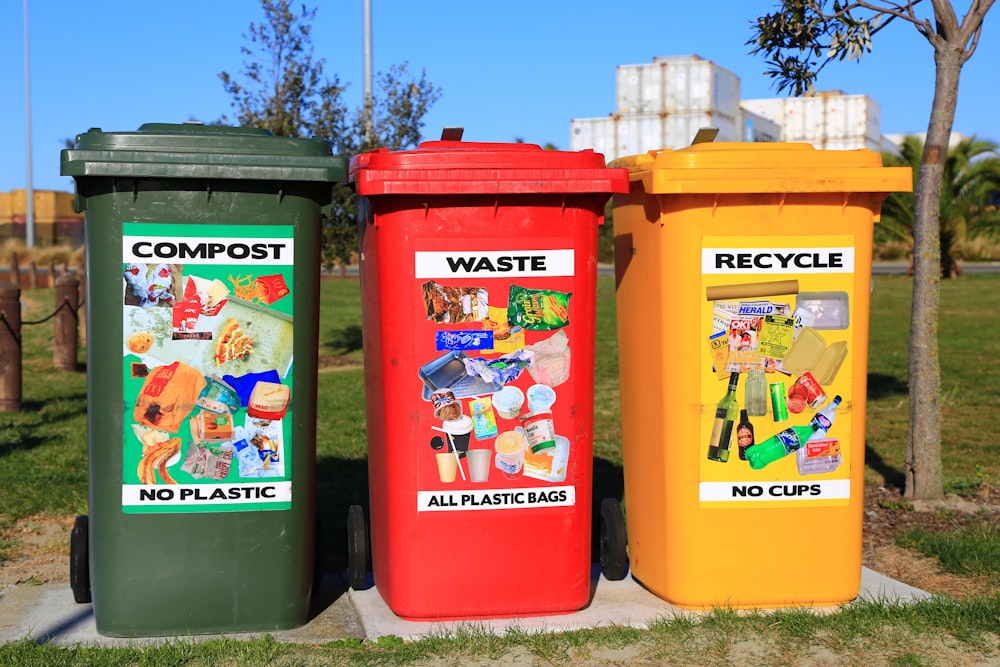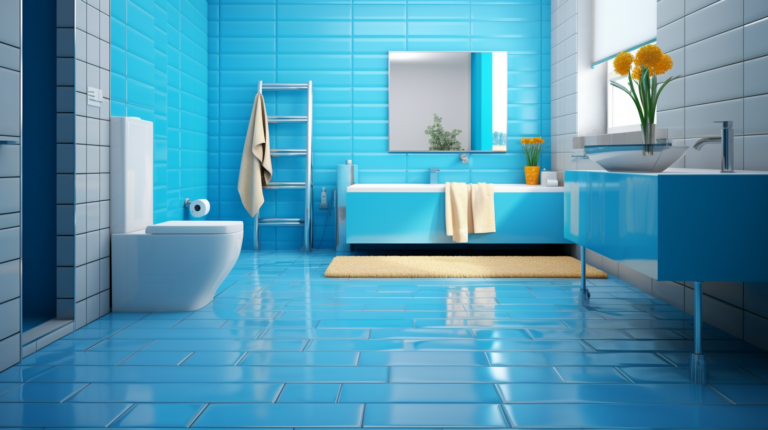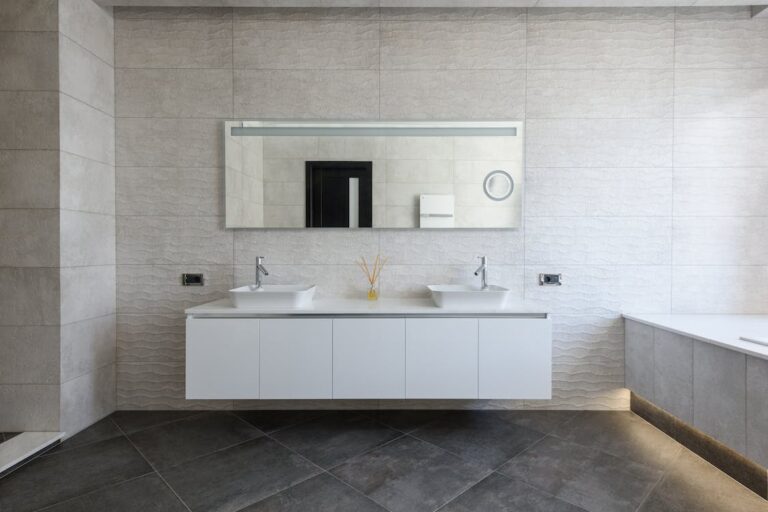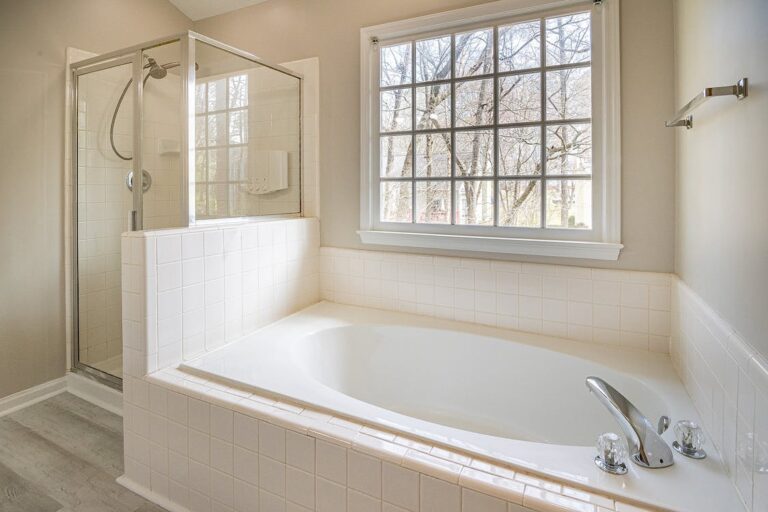Sustainable Bathroom Design : Eco-Friendly Ideas for Homeowners in 2023
Welcome to the world of sustainable bathroom design! In today’s article, we will explore the various ways you can create an eco-friendly bathroom that not only helps you reduce your environmental impact but also enhances your overall well-being. By incorporating sustainable practices and materials into your bathroom, you can make a positive difference for the planet while enjoying a stylish and functional space.
While many homeowners focus on eco-friendly practices in other areas of their homes, the bathroom often gets overlooked. However, with a little effort and creativity, you can transform your bathroom into a sustainable oasis that promotes conservation and reduces waste. From water-saving fixtures to energy-efficient lighting, there are a multitude of options available to help you create a more sustainable bathroom.
Throughout this article, we will delve into the importance of sustainable bathroom design and explore various ideas and solutions that you can implement in your own home. So let’s dive in and discover the benefits of going green in the bathroom!
Table of Contents
- 1 Understanding the Importance of Sustainable Bathroom Design
- 2 Water-Saving Fixtures and Appliances
- 3 Energy-Efficient Lighting and Ventilation
- 4 Sustainable Materials and Eco-Friendly Design
- 5 Water Management and Conservation
- 6 Creating a Nature-Inspired Oasis
- 7 Promoting Sustainable Habits
- 8 Conclusion
- 9 Frequently Asked Questions
Understanding the Importance of Sustainable Bathroom Design
When it comes to designing or renovating your bathroom, you may be focused on factors like style, functionality, and comfort. However, it’s important to also consider the impact your choices have on the environment. Sustainable bathroom design is gaining popularity as people become more conscious about their ecological footprint. By implementing eco-friendly ideas in your bathroom, you can contribute to the well-being of the planet while enjoying a beautiful and functional space. In this section, we will explore the importance of sustainable bathroom design and its various benefits.
Benefits of Eco-Friendly Bathrooms
Embracing sustainable bathroom design comes with a host of benefits. Here are a few reasons why it’s worth considering:
- Environmental Conservation: By opting for eco-friendly design, you contribute to the preservation of natural resources and reduce the carbon footprint associated with conventional bathroom fixtures and practices.
- Cost Savings: Sustainable bathroom fixtures and appliances are designed to be energy and water efficient, which can result in significant cost savings on your utility bills over time.
- Improved Indoor Air Quality: Non-toxic materials used in sustainable bathroom design minimize the release of harmful chemicals, ensuring a healthier indoor environment for you and your family.
- Increased Property Value: Sustainable features are increasingly popular among homebuyers. Incorporating eco-friendly design elements can enhance your property value and make your home more attractive in the real estate market.
Reducing Water Consumption
Water conservation is paramount when it comes to sustainable bathroom design. Implementing water-saving fixtures and appliances can drastically reduce your household’s water consumption. Here are some options to consider:
- Low-Flow Showerheads: These showerheads use less water without sacrificing water pressure, allowing you to enjoy a satisfying shower while saving water.
- Water-Efficient Toilets: Dual-flush or low-flush toilets are designed to use less water per flush compared to traditional toilets. These can make a significant difference in water consumption over time.
- Sensor-Activated Faucets: Sensor-activated faucets reduce water waste by automatically shutting off when not in use, preventing water from running unnecessarily.
- Rainwater Harvesting Systems: Collecting rainwater for non-potable purposes like toilet flushing and irrigation can conserve water and reduce your dependence on municipal water sources.
Energy Efficiency
In addition to water conservation, energy efficiency is an essential aspect of sustainable bathroom design. By implementing energy-saving strategies, you can minimize energy consumption and reduce your carbon footprint. Here are some ideas:
- LED Lighting: LED lights are energy-efficient, long-lasting, and can provide excellent illumination for your bathroom. They consume less energy compared to traditional incandescent bulbs.
- Natural Lighting Options: Maximize natural light in your bathroom by incorporating large windows or skylights. This not only reduces the need for artificial lighting but also creates a brighter and more inviting space.
- Energy-Efficient Exhaust Fans: Install fans with high energy-efficiency ratings to ensure proper ventilation while minimizing energy consumption.
- Automation and Smart Controls: Utilize smart technology and automation systems to control lighting, heating, and ventilation in your bathroom efficiently.
Using Non-Toxic Materials
Choosing non-toxic materials for your bathroom design is essential for creating a healthy and environmentally friendly space. Many conventional building materials contain volatile organic compounds (VOCs) that can release harmful chemicals into the air, negatively impacting indoor air quality. Instead, consider the following alternatives:
- Recycled or Reclaimed Materials: Opt for materials made from recycled or reclaimed sources when possible. These can include countertops made from recycled glass or flooring made from reclaimed wood.
- Bamboo and Cork Flooring: These natural materials are sustainable options and have low environmental impact compared to traditional hardwood flooring.
- Low-VOC Paints: Choose paint products labeled as low-VOC or VOC-free. These paints release fewer harmful chemicals into the air, creating a healthier indoor environment.
- Green Building Certifications: Look for products that have been certified by organizations like LEED (Leadership in Energy and Environmental Design) or GreenGuard. These certifications ensure that the materials meet specific environmental and health standards.
Understanding the importance of sustainable bathroom design is the first step towards creating an eco-friendly space. By reducing water consumption, embracing energy efficiency, and using non-toxic materials, you can make a positive impact on the environment while enjoying a beautiful and functional bathroom.
Water-Saving Fixtures and Appliances
When it comes to creating a sustainable bathroom, water-saving fixtures and appliances play a vital role. By incorporating these eco-friendly options into your bathroom design, you can reduce water consumption and make a positive impact on the environment. Here are some water-saving fixtures and appliances that you can consider for your sustainable bathroom:
Low-Flow Showerheads
Traditional showerheads can use a substantial amount of water during each use, contributing to water waste. By installing low-flow showerheads, you can significantly reduce water consumption without compromising on your shower experience. These showerheads are designed to restrict water flow while still providing a satisfactory stream of water. On average, low-flow showerheads can save up to 2.5 gallons of water per minute compared to standard showerheads.
Water-Efficient Toilets
Toilets are one of the biggest water consumers in a household. Traditional toilets use around 1.6 gallons of water per flush, whereas water-efficient toilets use significantly less. There are two main types of water-efficient toilets:
- Dual-flush toilets: These toilets have two buttons or handles, allowing you to choose between a partial flush for liquid waste and a full flush for solid waste. This way, you can use less water when it’s appropriate.
- Low-flow toilets: Low-flow toilets use advanced flushing technology to achieve efficient and effective water usage. They typically use around 1.28 gallons of water per flush, saving up to 20% more water than traditional toilets.
Sensor-Activated Faucets
Sensor-activated faucets, also known as touchless faucets, provide a convenient and hygienic way to reduce water waste. These faucets are equipped with motion sensors that detect movement and automatically turn the water on and off when needed. By eliminating the need to manually turn the faucet on and off, sensor-activated faucets prevent water from being left running unnecessarily and help conserve water.
Rainwater Harvesting Systems
Rainwater harvesting systems are an excellent way to make use of rainwater for non-potable purposes in your bathroom. These systems collect rainwater from rooftops and store it in a tank or cistern. The collected rainwater can then be used for activities such as flushing toilets or watering plants. By utilizing rainwater, you can significantly reduce your dependency on freshwater sources and conserve water.
Incorporating water-saving fixtures and appliances is a smart and eco-friendly choice for your bathroom. Not only do they help you reduce water consumption, but they also contribute to long-term water savings and lower water bills. So, why not make your bathroom more sustainable and water-efficient by opting for these water-saving options?
Note: Remember to consult with a professional plumber or contractor to ensure proper installation and compatibility of these water-saving fixtures and appliances in your bathroom.
Energy-Efficient Lighting and Ventilation
When it comes to creating a sustainable bathroom design, energy-efficient lighting and ventilation are crucial factors to consider. Not only do they help to reduce energy consumption and lower utility bills, but they also contribute to a healthier and more comfortable bathroom environment. In this section, we will explore some of the best practices for implementing energy-efficient lighting and ventilation in your bathroom.
LED Lighting
One of the easiest and most effective ways to save energy in your bathroom is by using LED lighting. LED bulbs are much more energy-efficient compared to traditional incandescent or fluorescent bulbs. They consume less electricity and have a longer lifespan, which means you will save both energy and money in the long run.
Another advantage of LED lights is that they produce less heat, making them a safer option for the bathroom. Traditional bulbs can generate a significant amount of heat, which can be uncomfortable and potentially pose a fire hazard in a small enclosed space like a bathroom. LED lights remain cool to the touch, ensuring a safer and more enjoyable lighting experience.
Natural Lighting Options
In addition to artificial lighting, incorporating natural lighting options into your bathroom design can further enhance energy efficiency. Natural daylight not only provides a sense of openness and connection to the outdoors but also reduces the need for electric lighting during the daytime.
Consider installing skylights or larger windows in your bathroom to maximize the amount of natural light entering the space. This will not only brighten up the room but also reduce your reliance on artificial lighting. Just make sure to position windows strategically to maintain privacy and prevent direct sunlight from causing overheating or fading of bathroom fixtures and materials.
Energy-Efficient Exhaust Fans
Proper ventilation is essential for maintaining good air quality and preventing the buildup of moisture and odors in the bathroom. However, traditional bathroom exhaust fans can be energy-guzzlers, especially if they run continuously or are oversized for the space.
Opt for energy-efficient exhaust fans that are designed to move a sufficient amount of air while consuming less energy. Look for models with adjustable fan speeds or built-in humidity sensors that automatically activate the fan when needed. This way, you can ensure optimal ventilation while minimizing energy consumption.
Automation and Smart Controls
Another innovative way to improve energy efficiency in your bathroom is by utilizing automation and smart controls. These technologies allow you to control lighting and ventilation systems remotely or set them on timers to ensure they are only active when necessary.
For example, you can install motion sensor switches for lighting, so lights turn on automatically when someone enters the bathroom and turn off after a certain period of inactivity. This eliminates the need for manually switching the lights on and off, reducing energy waste.
Similarly, smart ventilation controls can adjust fan speeds and operating times based on humidity levels or occupancy, optimizing energy usage. You can also integrate these systems with your home automation system for even greater convenience and energy savings.
Implementing energy-efficient lighting and ventilation in your bathroom not only helps to reduce environmental impact but also offers benefits such as lower energy bills and improved indoor air quality. By embracing these sustainable design practices, you can create a more enjoyable and eco-friendly bathroom space for you and your family to enjoy.
Also Read: Raising the Bar : Innovative Bathroom Designs for Homeowners in 2023
Sustainable Materials and Eco-Friendly Design
When it comes to designing a sustainable bathroom, using eco-friendly materials is key. Not only do these materials help reduce your carbon footprint, but they also create a healthier indoor environment for you and your family. By selecting sustainable materials and incorporating eco-friendly design elements, you can give your bathroom a stylish and environmentally responsible makeover. Here are some ideas to get you started:
Recycled or Reclaimed Materials
One of the most effective ways to make your bathroom more sustainable is by using recycled or reclaimed materials. These materials not only help reduce waste but also add a unique touch to your space. Some popular options include:
- Recycled glass countertops: Made from crushed glass mixed with resins, these countertops are not only beautiful but also durable and eco-friendly.
- Reclaimed wood: Using reclaimed wood for bathroom vanities, shelving, or flooring adds a rustic and vintage charm to your space. Plus, it prevents the demand for new wood, which helps protect forests.
- Recycled porcelain tiles: Made from post-consumer and post-industrial waste, these tiles are a great sustainable choice for bathroom floors, walls, and backsplashes.
Bamboo and Cork Flooring
When it comes to bathroom flooring, bamboo and cork are sustainable alternatives to traditional options like ceramic or vinyl. Here’s why they are worth considering:
- Bamboo flooring: Bamboo is a fast-growing renewable material that is available in various styles and finishes. It’s also highly durable, resistant to moisture, and easy to maintain.
- Cork flooring: Made from the bark of the cork oak tree, cork flooring is sustainable, comfortable to walk on, and highly resistant to moisture and mold. It also provides excellent thermal insulation, which is perfect for those colder bathroom floors.
Low-VOC Paints
Traditional paints emit volatile organic compounds (VOCs), which can negatively impact indoor air quality. By using low-VOC or zero-VOC paints in your bathroom, you can create a healthier and more environmentally friendly space. Low-VOC paints offer the following benefits:
- Reduced air pollution: Low-VOC paints have lower levels of toxic emissions, which contribute to improved air quality and reduced outdoor smog formation.
- No harsh odors: Unlike traditional paints that have a strong chemical smell, low-VOC paints are virtually odorless, making them more pleasant to use during the painting process.
Green Building Certifications
If you are looking for guidance in choosing sustainable materials for your bathroom, look for products certified by green building organizations. These certifications ensure that the materials used meet specific environmental standards. Some popular certifications to look for include:
- LEED (Leadership in Energy and Environmental Design): This certification focuses on various aspects of sustainability, including material selection, water efficiency, and energy usage. Look for products with LEED certification to ensure they meet strict environmental criteria.
- FSC (Forest Stewardship Council): This certification ensures that wood and wood-based products come from responsibly managed forests. Choosing FSC-certified materials helps protect forests and supports sustainable logging practices.
By incorporating sustainable materials and eco-friendly design elements into your bathroom, you can create a beautiful space that is both stylish and environmentally responsible. So, get creative, explore different options, and make your bathroom a reflection of your commitment to sustainability!
Water Management and Conservation
Water is a precious resource, and it’s essential to conserve and manage it effectively. When it comes to sustainable bathroom design, water management and conservation play a crucial role. By implementing water-saving practices and technologies, homeowners can significantly reduce their water consumption and contribute to a more sustainable future. Here are some tips for water management and conservation in your bathroom:
Applying Efficient Irrigation Practices
- Consider installing a smart irrigation system that adjusts watering schedules based on weather conditions and soil moisture levels. This ensures that your plants receive the right amount of water without waste.
- Use drip irrigation instead of traditional sprinkler systems to minimize water loss through evaporation and make sure that water is delivered directly to the roots of your plants.
- Mulching your garden beds can help retain moisture in the soil, reducing the need for frequent watering.
Greywater Recycling
- Greywater refers to gently used water from sinks, showers, and laundry machines. Instead of letting it go down the drain, you can recycle greywater and use it to water your plants or flush your toilets.
- Greywater systems can be installed in your home to capture and filter greywater for reuse. They typically involve a collection tank, filtration system, and a separate plumbing system for distributing the recycled water.
Rainwater Harvesting
- Collecting rainwater is an excellent way to reduce your reliance on municipal water and conserve resources. Install rainwater harvesting systems to collect and store rainwater from your roof for use in irrigating your garden or topping up toilets.
- Rain barrels or cisterns can be placed beneath gutter downspouts to collect rainwater. Make sure to use screens to keep out debris and prevent mosquito breeding.
Landscaping with Native Plants
- Choose native plants for your landscaping, as they are adapted to your local climate and require less watering. They are more likely to thrive without the need for excessive water usage.
- Native plants also support local ecosystems and biodiversity, providing food and habitat for birds, bees, and other wildlife.
By implementing these water management and conservation strategies, you can significantly reduce your water consumption and make a positive impact on the environment. Not only will you contribute to water conservation efforts, but you will also save money on your water bills. So, let’s all do our part in managing water responsibly and sustainably.
“Water is the driving force of all nature.” – Leonardo da Vinci
Creating a Nature-Inspired Oasis
Have you ever dreamed of having a bathroom that feels like a tranquil escape in the midst of nature? A space where you can relax and unwind, surrounded by natural elements and a serene ambiance? Well, with sustainable bathroom design, you can turn that dream into a reality. In this section, we’ll explore various ideas and tips for creating a nature-inspired oasis in your bathroom.
Indoor Plants and Living Walls
One of the easiest ways to bring nature into your bathroom is by incorporating indoor plants. Not only do plants add a touch of greenery and beauty to your space, but they also provide numerous health benefits. Plants help purify the air by absorbing toxins and releasing oxygen, creating a fresh and clean atmosphere.
Here are a few plant ideas for your bathroom:
- Spider Plant: This air-purifying plant is known for its ability to remove formaldehyde and other harmful chemicals from the air.
- Snake Plant: Also known as Mother-in-Law’s Tongue, this plant releases oxygen at night, making it perfect for bedrooms or bathrooms.
- Aloe Vera: This succulent plant not only adds a decorative touch but also has soothing properties for your skin.
If you’re short on space, consider installing a living wall or vertical garden in your bathroom. These green walls not only provide a stunning visual display but also enhance air quality and create a tranquil ambiance.
Natural Elements and Biophilic Design
In addition to plants, incorporating natural elements into your bathroom design can further enhance the nature-inspired oasis. Elements such as wood, stone, and bamboo can add warmth and texture to your space. Consider using these materials for flooring, countertops, or even small accents like soap dishes or toothbrush holders.
Biophilic design is another concept that embraces our innate connection with nature. This design approach aims to incorporate natural elements and patterns into our living spaces. Some ideas to incorporate biophilic design in your bathroom include:
- Nature-inspired wallpaper: Opt for wallpapers with botanical prints or patterns that resemble natural elements like leaves or flowers.
- Natural colors: Choose earthy tones and natural hues for your bathroom walls, tiles, and accessories.
- Natural textures: Incorporate materials with natural textures like rough stone or textured tiles to add depth and visual interest.
Sustainable Bath and Body Products
Creating a nature-inspired oasis goes beyond just the physical design of your bathroom. It also extends to the products you use. Consider swapping out conventional bath and body products for eco-friendly and sustainable alternatives. Look for products that are:
- Organic: Choose products made from organic and natural ingredients to minimize exposure to harsh chemicals.
- Cruelty-free: Opt for products that are not tested on animals and are cruelty-free.
- Minimal packaging: Look for products with minimal or recyclable packaging to reduce waste.
There are many sustainable and ethical brands available today that offer a wide range of bath and body products. From organic soaps and shampoos to bamboo toothbrushes and reusable cotton pads, these products allow you to care for yourself while also caring for the environment.
Outdoor Bathroom Spaces
For those lucky enough to have outdoor space, why not consider creating an outdoor bathroom area? This can be a truly unique and memorable addition to your home. Picture yourself taking a shower under the open sky, surrounded by lush greenery and the soothing sound of birds chirping.
When designing an outdoor bathroom, it’s crucial to consider privacy and durability. Use natural, weather-resistant materials such as stone or teak for flooring and walls. Make sure to incorporate proper drainage systems to prevent water buildup. Additionally, think about installing a privacy screen or fence to ensure your outdoor bathroom remains a private oasis.
Remember, creating a nature-inspired bathroom isn’t just about the aesthetics. It’s about transforming your space into a soothing retreat that connects you with the beauty of the natural world. By incorporating plants, natural elements, sustainable products, and even creating an outdoor bathroom, you can create a truly peaceful and relaxing environment that you’ll enjoy every day. So go ahead, let nature inspire your oasis!
Promoting Sustainable Habits
In the pursuit of creating a sustainable bathroom, it is important to not only focus on the design and materials but also on promoting sustainable habits. Adopting and encouraging eco-friendly practices can go a long way in reducing our impact on the environment. Here are some simple yet effective ways to promote sustainable habits in your everyday life:
1. Reducing Plastic Waste
Plastic waste is a major environmental concern. Take steps to reduce your plastic consumption and promote sustainable alternatives:
- Carry reusable bags when shopping.
- Use refillable water bottles instead of single-use plastic bottles.
- Switch to reusable containers and wraps instead of disposable plastic ones.
- Opt for products with minimal packaging or packaging made from recycled materials.
2. Conserving Energy and Water
Conserving energy and water not only saves resources but also reduces utility bills. Here are some habits to consider:
- Turn off lights, appliances, and electronics when not in use.
- Switch to energy-efficient appliances.
- Set your thermostat to an energy-saving temperature.
- Fix any leaks in faucets or toilets to prevent water wastage.
- Take shorter showers and consider installing a low-flow showerhead.
3. Proper Waste Disposal
Proper waste disposal is essential for minimizing environmental harm. Make sure to:
- Separate recyclable materials from general waste and dispose of them in the appropriate recycling bins.
- Compost organic waste like food scraps and yard trimmings to reduce landfill waste.
- Dispose of hazardous materials, such as batteries and electronics, in designated collection centers to prevent pollution.
4. Educating Household Members
Promoting sustainable habits starts at home. Educate your family members and encourage them to be conscious of their actions. Here are a few ideas:
- Explain the importance of sustainability and how their actions impact the environment.
- Involve everyone in eco-friendly activities such as gardening or recycling.
- Encourage turning off lights and appliances when leaving a room.
- Teach the importance of conserving water by turning off taps while brushing teeth or washing dishes.
By adopting these sustainable habits, you can make a significant difference in reducing your ecological footprint and creating a greener future. Remember, small actions taken collectively can have a big impact on the planet.
“The greatest threat to our planet is the belief that someone else will save it.” – Robert Swan
Also Read: Creating a Vintage-Inspired Bathroom : Design Ideas for Homeowners in 2023
Conclusion
Creating a sustainable bathroom not only benefits the environment but also enhances the well-being of homeowners. By incorporating eco-friendly ideas, you can reduce water and energy consumption, minimize the use of toxic materials, and promote responsible habits. Here are a few key takeaways:
- Water-Saving Fixtures and Appliances: Installing low-flow showerheads, water-efficient toilets, sensor-activated faucets, and rainwater harvesting systems can significantly reduce water consumption in your bathroom.
- Energy-Efficient Lighting and Ventilation: Opt for LED lighting, utilize natural lighting options, invest in energy-efficient exhaust fans, and consider automation and smart controls to improve energy efficiency.
- Sustainable Materials and Eco-Friendly Design: Choose recycled or reclaimed materials, Bamboo and cork flooring, low-VOC paints, and opt for green building certifications to promote a sustainable and environmentally conscious bathroom design.
- Water Management and Conservation: Implement efficient irrigation practices, recycle greywater, harvest rainwater, and incorporate native plants in your landscape to conserve water resources outside your bathroom.
- Creating a Nature-Inspired Oasis: Bring indoor plants and living walls into your bathroom, incorporate natural elements and biophilic design, explore sustainable bath and body products, and consider creating outdoor bathroom spaces to foster a connection with nature.
- Promoting Sustainable Habits: Reduce plastic waste, conserve energy and water by turning off lights and faucets when not in use, properly dispose of waste by recycling and composting, and educate household members about the importance of sustainable practices.
By making these small yet impactful changes, you can contribute to a greener future while enjoying a beautiful and eco-friendly bathroom. Remember, sustainable bathroom design is not only a trend but a responsibility to protect our planet for future generations.
Thank you for joining us on this journey to create sustainable and eco-friendly homes. Visit [Arkitecture Today](https://arkitecture.today) for more daily dose of architecture, home and interior design, decoration ideas, and inspiration.
Image Credit: [Unsplash](https://unsplash.com/photos/xxxxxxxxxx)
Frequently Asked Questions
- What are some eco-friendly materials for sustainable bathroom design?Some eco-friendly materials for sustainable bathroom design include bamboo, recycled glass, natural stone, salvaged wood, and low VOC paints.
- How can I save water in my bathroom?To save water in your bathroom, you can install low-flow toilets and showerheads, fix any leaks promptly, and consider using a dual-flush toilet.
- Are there any energy-efficient lighting options for bathroom design?Yes, you can opt for energy-efficient lighting options such as LED bulbs or compact fluorescent lights (CFLs), which consume less energy and last longer.
- What are some ways to incorporate natural ventilation in a sustainable bathroom design?You can incorporate natural ventilation in your bathroom design by adding operable windows, skylights, or using exhaust fans with humidity sensors to remove excess moisture.
- How can I make my bathroom design more eco-friendly without a major renovation?You can make your bathroom design more eco-friendly without a major renovation by using eco-friendly cleaning products, using recycled or upcycled accessories, and adding indoor plants for improved air quality.




